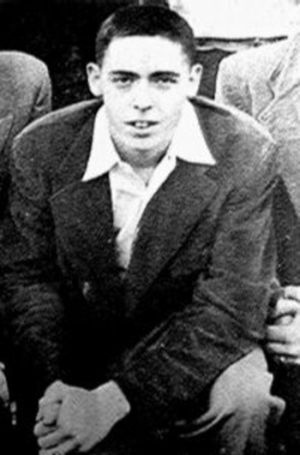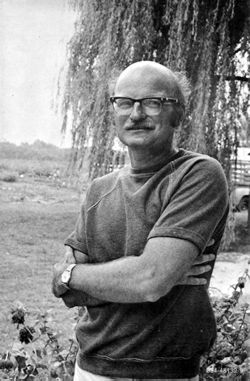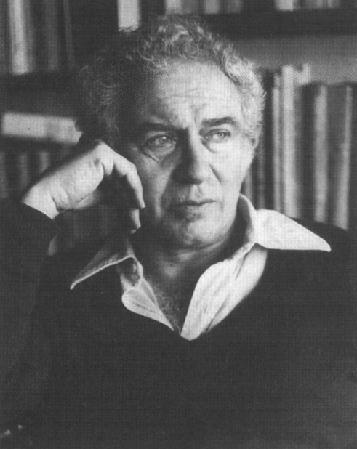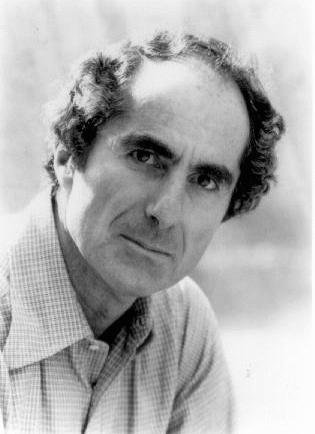Authors
Thomas Pynchon (1937- )
 Thomas Pynchon, a mysterious, publicity-shunning author, was born in New York and graduated from Cornell University in 1958, where he may have come under the influence of Vladimir Nabokov. Certainly, his innovative fantasies use themes of translating clues, games, and codes that could derive from Nabokov. Pynchon's flexible tone can modulate paranoia into poetry. Thomas Pynchon, a mysterious, publicity-shunning author, was born in New York and graduated from Cornell University in 1958, where he may have come under the influence of Vladimir Nabokov. Certainly, his innovative fantasies use themes of translating clues, games, and codes that could derive from Nabokov. Pynchon's flexible tone can modulate paranoia into poetry.
All of Pynchon's fiction is similarly structured. A vast plot is unknown to at least one of the main characters, whose task it then becomes to render order out of chaos and decipher the world. This project, exactly the job of the traditional artist, devolves also upon the reader, who must follow along and watch for clues and meanings. This paranoid vision is extended across continents and time itself, for Pynchon employs the metaphor of entropy, the gradual running down of the universe. The masterful use of popular culture - particularly science fiction and detective fiction - is evident in his works.
Pynchon's work V (1963) is loosely structured around Benny Profane - a failure who engages in pointless wanderings and various weird enterprises - and his opposite, the educated Herbert Stencil, who seeks a mysterious female spy, V (alternatively Venus, Virgin, Void). The Crying of Lot 49 (1966), a short work, deals with a secret system associated with the U.S. Postal Service. Gravity's Rainbow (1973) takes place during World War II in London, when rockets were falling on the city, and concerns a farcical yet symbolic search for Nazis and other disguised figures.
John Barth (1930- )
 John Barth, a native of Maryland, is more interested in how a story is told than in the story itself, but where Pynchon deludes the reader by false trails and possible clues out of detective novels, Barth entices his audience into a carnival fun house full of distorting mirrors that exaggerate some features while minimizing others. John Barth, a native of Maryland, is more interested in how a story is told than in the story itself, but where Pynchon deludes the reader by false trails and possible clues out of detective novels, Barth entices his audience into a carnival fun house full of distorting mirrors that exaggerate some features while minimizing others.
Realism is the enemy for Barth, the author of Lost in the Funhouse (1968), 14 stories that constantly refer to the processes of writing and reading. Barth's intent is to alert the reader to the artificial nature of reading and writing and to prevent him or her from being drawn into the story as if it were real. To explode the illusion of realism, Barth uses a series of reflexive devices to remind his audience that they are reading.
Barth's earlier works, like Saul Bellow's, were questioning and existential, and took up the 1950s themes of escape and wandering. In The Floating Opera (1956), a man considers suicide. The End of the Road (1958) concerns a complex love affair. Works of the 1960s became more comical and less realistic. The Sot-Weed Factor (1960) parodies an 18th-century picaresque style, while Giles Goat-Boy (1966) is a parody of the world seen as a university.
Norman Mailer (1923- )
 Norman Mailer made himself the most visible novelist of the l960s and l970s. Co-founder of the anti-establishment New York City weekly The Village Voice, Mailer publicized himself along with his political views. In his appetite for experience, vigorous style, and a dramatic public persona, Mailer follows in the tradition of Ernest Hemingway. To gain a vantage point on the assassination of President John F. Kennedy, Vietnam War protests, black liberation, and the women's movement, he constructed hip, existentialist, macho male personae. The irrepressible Mailer went on to marry six times and run for mayor of New York. Norman Mailer made himself the most visible novelist of the l960s and l970s. Co-founder of the anti-establishment New York City weekly The Village Voice, Mailer publicized himself along with his political views. In his appetite for experience, vigorous style, and a dramatic public persona, Mailer follows in the tradition of Ernest Hemingway. To gain a vantage point on the assassination of President John F. Kennedy, Vietnam War protests, black liberation, and the women's movement, he constructed hip, existentialist, macho male personae. The irrepressible Mailer went on to marry six times and run for mayor of New York.
Mailer is the reverse of a writer like John Barth, for whom the subject is not as important as the way it is handled. Unlike the invisible Thomas Pynchon, Mailer constantly courts and demands attention.
A novelist, essayist, sometime politician, literary activist, and occasional actor, Mailer is always on the scene. Some of his New Journalism works are Miami and the Siege of Chicago (1968), an analysis of the 1968 U.S. presidential conventions, and his compelling study about the execution of a condemned murderer, The Executioner's Song (1979).
Philip Roth (1933- )
 Like Norman Mailer, Philip Roth has provoked controversy by mining his life for fiction. In Roth's case, his treatments of sexual themes and ironic analysis of Jewish life have drawn popular and critical attention, as well as criticism. Like Norman Mailer, Philip Roth has provoked controversy by mining his life for fiction. In Roth's case, his treatments of sexual themes and ironic analysis of Jewish life have drawn popular and critical attention, as well as criticism.
Roth's first book, Goodbye, Columbus (1959), satirized provincial Jewish suburbanites. In his best-known novel, the outrageous, best-selling Portnoy's Complaint (1969), a New York City administrator entertains his reserved psychoanalyst with off-color stories of his boyhood.
Although The Great American Novel (1973) looks into baseball lore, most of Roth's novels remain resolutely, even defiantly, autobiographical. In My Life As a Man (1974), under the stress of divorce, a man resorts to creating an alter-ego, Nathan Zuckerman, whose stories constitute one pole of the narrative, the other pole being the different kinds of readers' responses. Zuckerman seemingly takes over in a series of subsequent novels: The Ghost Writer (1979), Zuckerman Bound (1985), The Counterlife (1986), The Facts (1988).
Roth is a profound analyst of Jewish strengths and weaknesses. His characterizations are nuanced; his protagonists are complex, individualized, and deeply human. Roth's series of autobiographical novels about a writer recalls John Updike's recent Bech series, and it is master-stylist Updike with whom Roth - widely admired for his supple, ingenious style - is most often compared.
Despite its brilliance and wit, some readers find Roth's work self-absorbed. Still, his vigorous accomplishment over almost 50 years has earned him a place among the most distinguished of American novelists.
|

